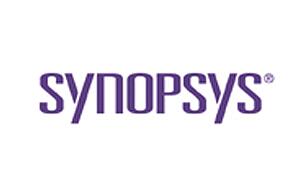超材料薄層可望打造隱形斗蓬
美國愛荷華州立大學(Iowa State University)的工程師開發出一種軟性、可伸縮且可調諧的「超材料薄層」(meta-skin),可用多排的小型液態金屬來隱藏物體,使其得以躲過鷹眼(sharp eye)雷達系統的偵察。這種超材料可加以調諧,藉由控制這種聚合物超材料薄層的拉伸與撓曲,大幅降低各種雷達頻率的反射。

美國愛荷華州立大學(Iowa State University)的工程師開發出一種軟性、可伸縮且可調諧的「超材料薄層」(meta-skin),可用多排的小型液態金屬來隱藏物體,使其得以躲過鷹眼(sharp eye)雷達系統的偵察。這種超材料可加以調諧,藉由控制這種聚合物超材料薄層的拉伸與撓曲,大幅降低各種雷達頻率的反射。
Stretchable skin cloaks objects by trapping radar waves
"It is believed that the present meta-skin technology will find many applications in electromagnetic frequency tuning, shielding and scattering suppression," the engineers wrote in their paper, published in the journal Scientific Reports.
To prove the idea that electromagnetic waves — and perhaps even the shorter wavelengths of visible light — can be suppressed with flexible, tunable liquid-metal technologies, the researchers implemented rows of split ring resonators embedded inside layers of silicone sheets. The electric resonators are filled with galinstan, a metal alloy that's liquid at room temperature and less toxic than other liquid metals such as mercury.
Those resonators are small rings with an outer radius of 2.5 millimeters and a thickness of half a millimeter. They have a 1 millimeter gap, essentially creating a small, curved segment of liquid wire.
The rings create electric inductors and the gaps create electric capacitors. Together they create a resonator that can trap and suppress radar waves at a certain frequency. Stretching the meta-skin changes the size of the liquid metal rings inside and changes the frequency the devices suppress.
Tests showed radar suppression was about 75 percent in the frequency range of 8 to 10 gigahertz, according to the paper. When objects are wrapped in the meta-skin, the radar waves are suppressed in all incident directions and observation angles.
According to the paper this meta-skin technology is different from traditional stealth technologies that often only reduce the backscattering (the power reflected back to a probing radar).
"The long-term goal is to shrink the size of these devices," said Dong, one of the lead authors. "Then hopefully we can do this with higher-frequency electromagnetic waves such as visible or infrared light. While that would require advanced nanomanufacturing technologies and appropriate structural modifications, we think this study proves the concept of frequency tuning and broadening, and multidirectional wave suppression with skin-type metamaterials."
Lead authors from Iowa State's department of electrical and computer engineering are Liang Dong, associate professor; and Jiming Song, professor. Co-authors are Iowa State graduate students Siming Yang, Peng Liu and Qiugu Wang; and former Iowa State undergraduate Mingda Yang. The National Science Foundation and the China Scholarship Council have partially supported the project.
![[20160311 cloak NT01P1]](/wp-content/uploads/sites/5/2020/04/20160311_cloak_NT01P1.jpg)
研究人員利用8層的堆疊,製作一個充滿純電子晶格的量子阱。
(來源:Northeastern University)
This flexible, stretchable and tunable "meta-skin" can trap radar waves and cloak objects from detection. Image courtesy of Liang Dong, Iowa State University.
編譯:Susan Hong
(參考原文:Stretchable skin cloaks objects by trapping radar waves,by Jean-Pierre Joosting)







訂閱EETimes Taiwan電子報
加入我們官方帳號LINE@,最新消息一手掌握!








